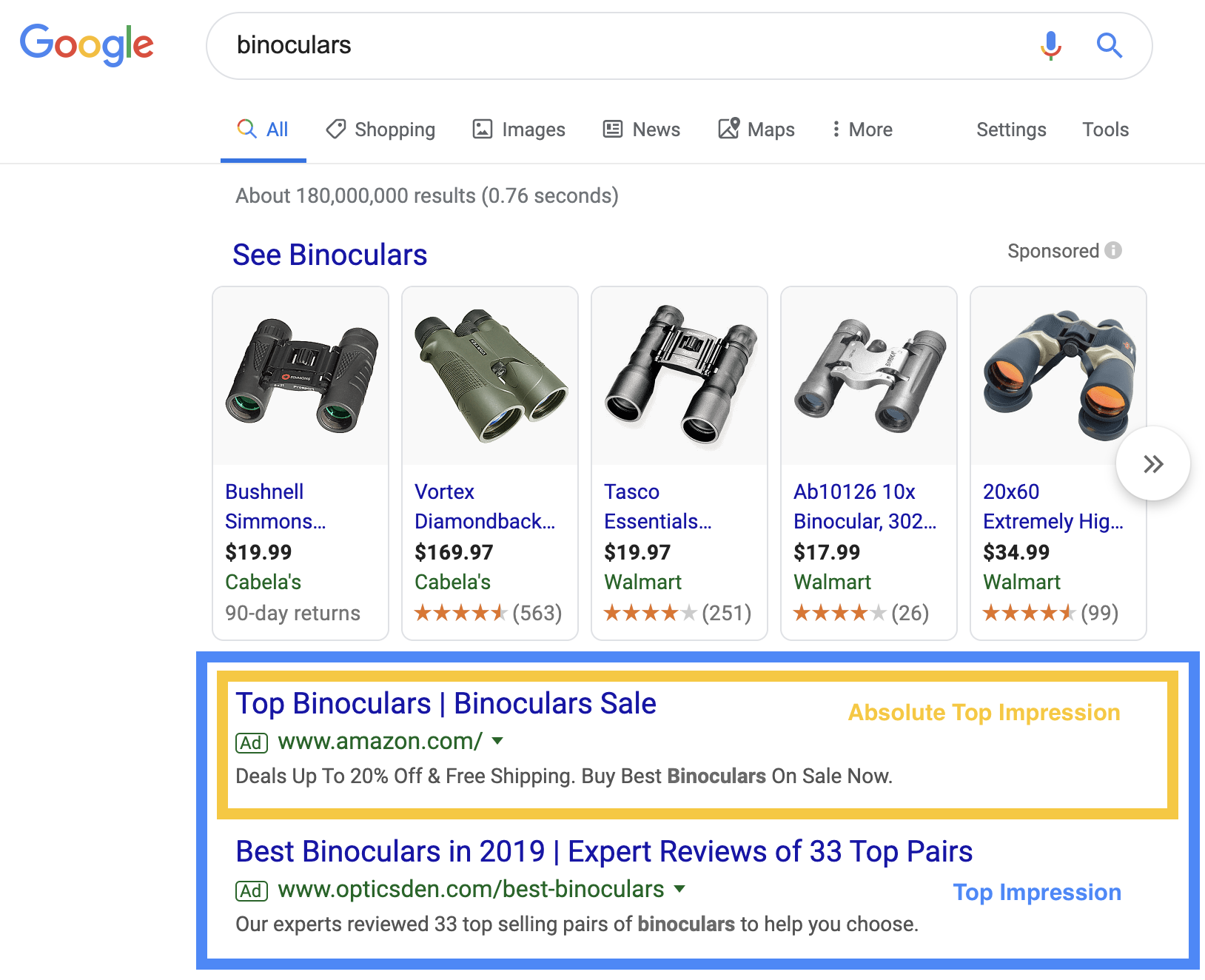Goodbye Average Position. What Is Absolute Top Impression Rate?
Google is sunsetting average position as a reported metric come September 30th, 2019. Make sure you and your team are prepared for the eventual removal of this metric.
Bye, bye average position.
You were a good one average position. One of those trusty metrics which never let us down. It always was reliable and told us clearly where our ads were placed compared to our competitors for our keywords on the Google search result page. However, on February 26th, 2019 Google announced (via Think With Google) that they were now going to remove the metric in favor of two newer metrics that would take its place.
What made average position great
Average position was not a stellar metric that changed the game of search advertising; besides those advertisers who optimized towards being number 1. However, it clearly showed on average where ad ranked. If for a given timeframe your average position was 2.5, that clearly indicated that your search ads on average showed in the 2nd ad position and sometimes the 3rd ad position. This was a clear and simple way of knowing where an ad was placed on the page when someone searched on Google for the advertisers brand, products, or services. The gaps with the average position metrics is that we don’t know how many times our ad showed in the 1st ad position and how many times our ad showed in the 3rd ad position, but now we have some answers to that question.
The replacements are here
Google being Google, they are not leaving advertisers out to dry on providing metrics which show you where on the page your ads were placed. They have decided to roll out two new metrics, absolute top impression rate and top impression rate, to replace average position which indicate the percentage of impressions served in the first overall ad position or the top block of ads.
Search absolute top impression rate “Impr. (Abs. Top) %”
Google’s Definition: Search absolute top impression rate “Impr. (Abs.Top) %” is the percent of your ad impressions that are shown as the very first ad above the organic search results.
Formula: Search absolute top impression rate = Impressions on the absolute top/Impressions
Search top impression rate “Impr. (Top) %”
Google’s Definition: Search top impression rate “Impr. (Top) %” is the percent of your ad impressions that are shown anywhere above the organic search results.
Formula: Search top impression rate = Impressions on top/Impressions.
Prepare for the future
If you or your team is still using average position as a reporting metric, or within a script, be prepared to make the switch to using the search top impression rate metrics prior to the sunsetting of average position. More than anything else for search advertisers the biggest change will be in the logic behind optimizing how often your ads will show on top of the page.
Optimizing With Top Impression Rates
The change away from average position brings new optimization practices based on the top impression rates in replacement of average position. These new metrics can clearly outline, based on Manual CPC models, how your keyword bids are affecting the amount of impressions you’re receiving as the first ad or in the top three to four ads in the SERP.
Signs of Over-bidding
If your absolute top impression rate is above 60% on paid search campaigns, for non-branded searches including category or product line searches, this high percentage could be a clear indication of over-bidding on your keywords. Depending on conversion rates paired with having a higher absolute top impression rate it would be smart to reduce manual keyword bids to a level which would put your top impression rate in the 20%-30% range for non-branded searches.
Owning a Search Term
However, If owning a search term is important to your paid search strategy knowing your absolute top impression rate is over 80% gives clear data to how many impressions that you did own that search term in Google Ads.
Signs of Under-Bidding
Having top impression rates below 20% in an ever increasing competitive, majority mobile first user base who don’t scroll past the fold of Google would be an indication of under bidding. To be competitive and get your ads seen and clicked on, it’s increasingly important to be on the top of the page at a respectable rate to achieve your desired performance goals.
Data Is Power
While losing a legacy metric causes disruption to old standing practice in the paid search, the new metrics coming into Google Ads give us all more data to use towards better optimized ads which produce the results we all crave.

